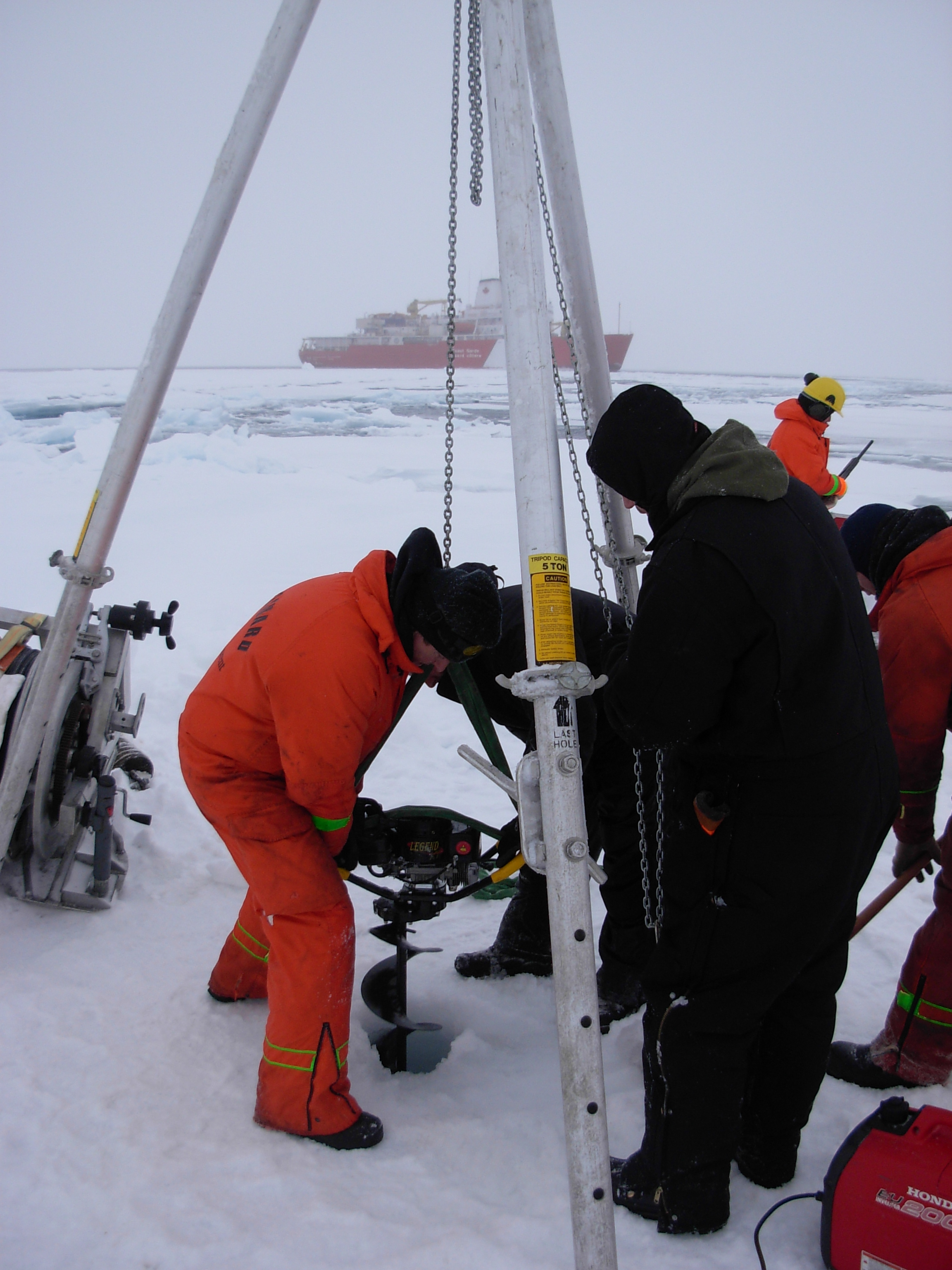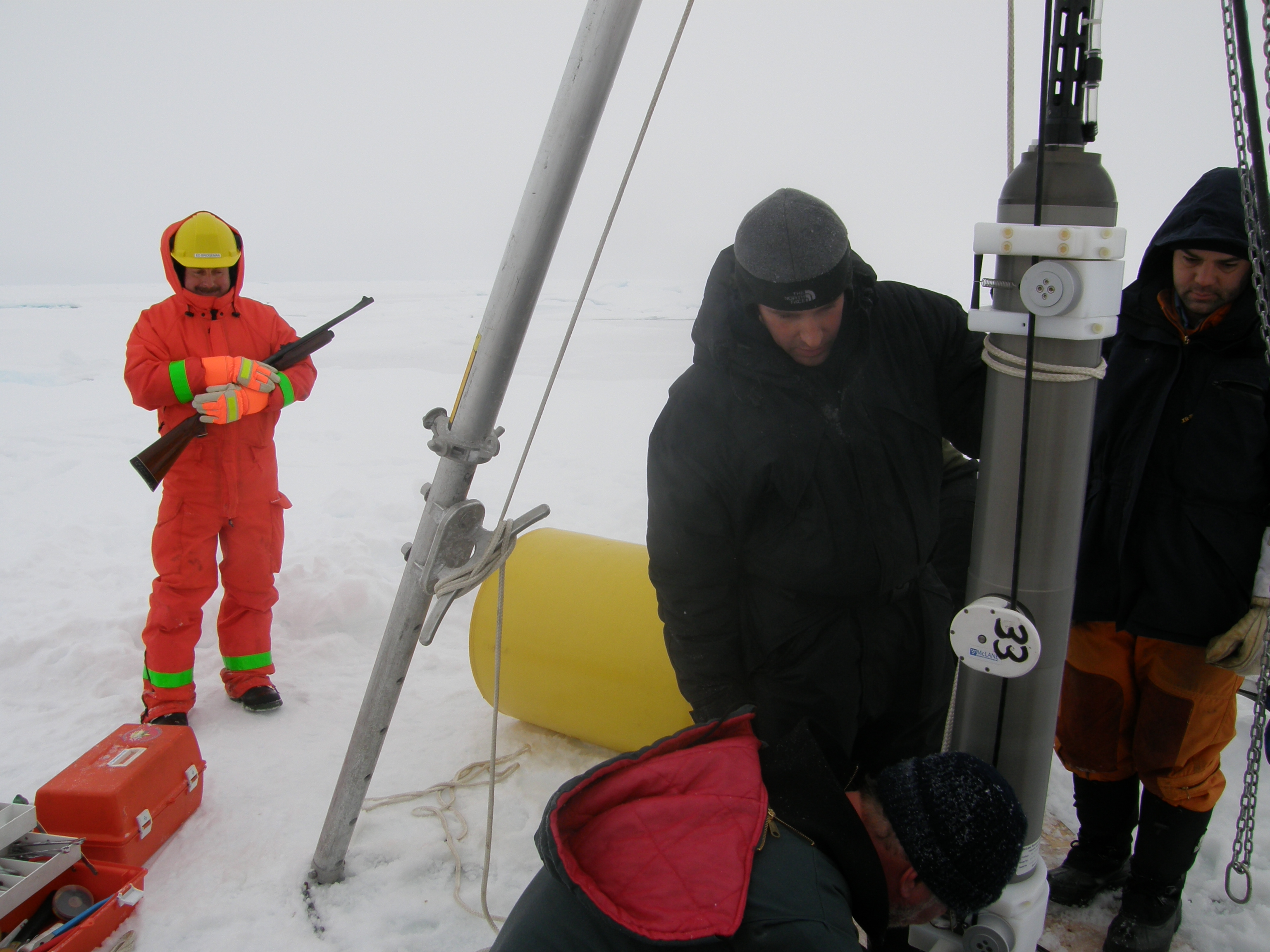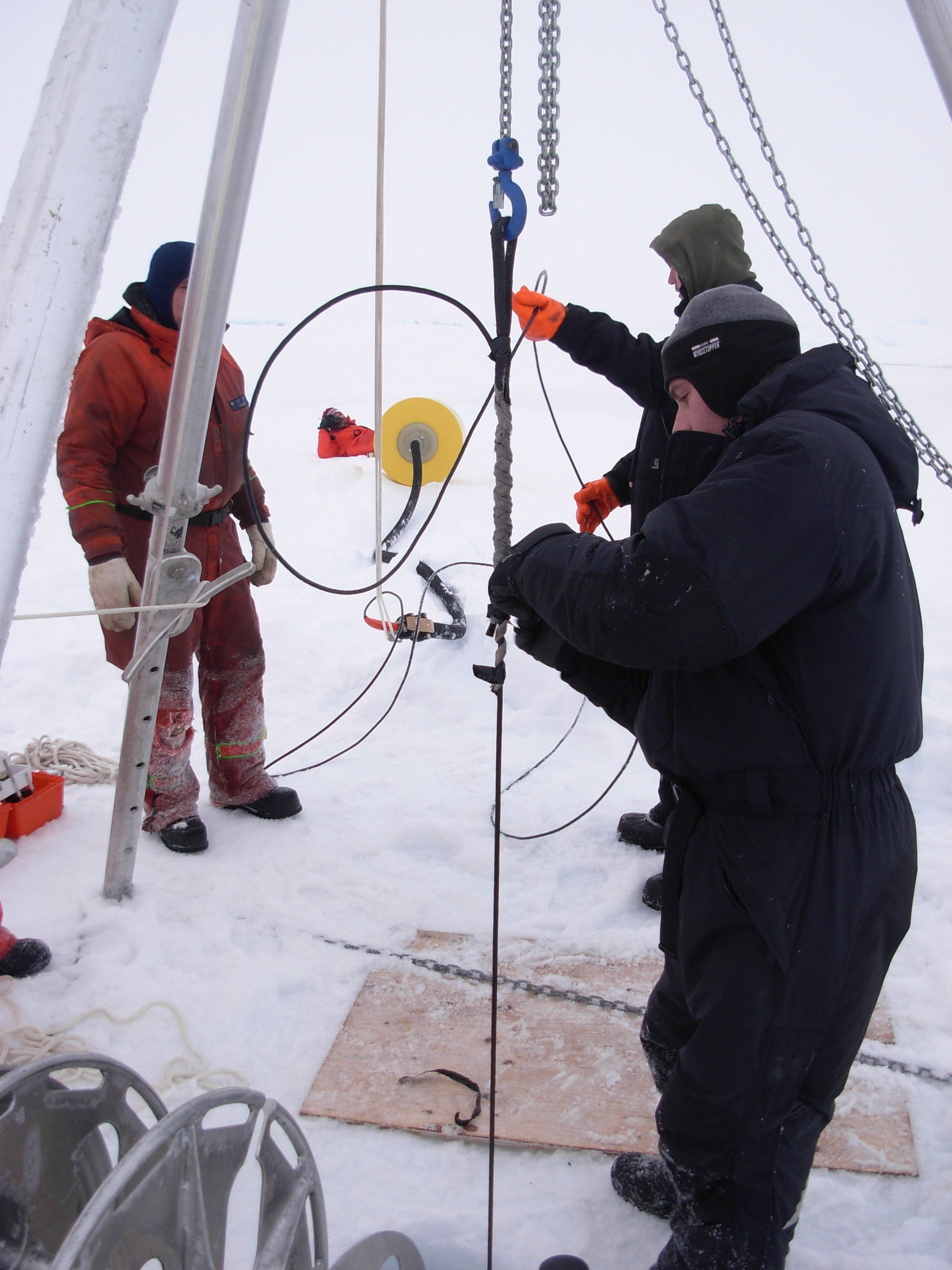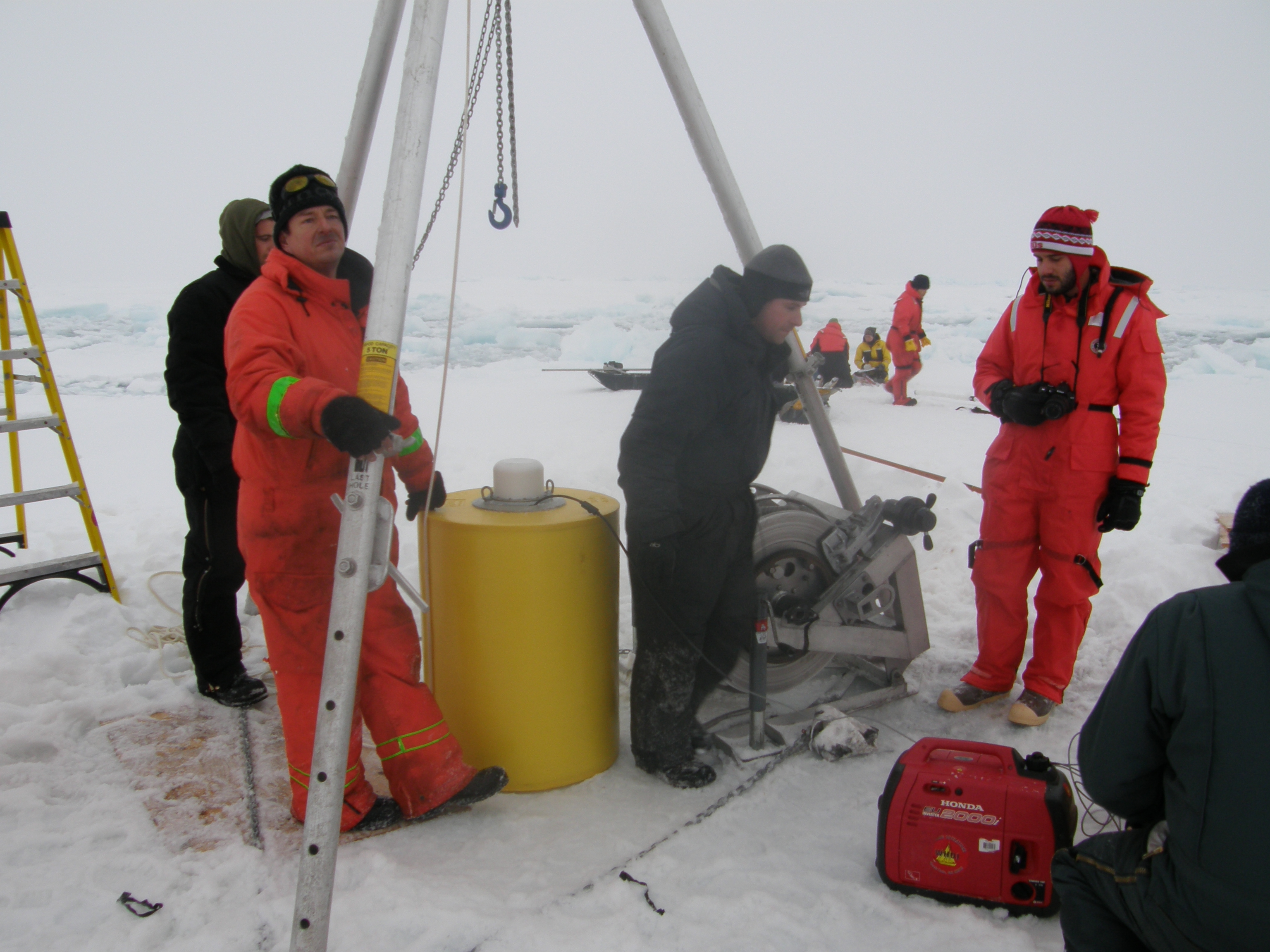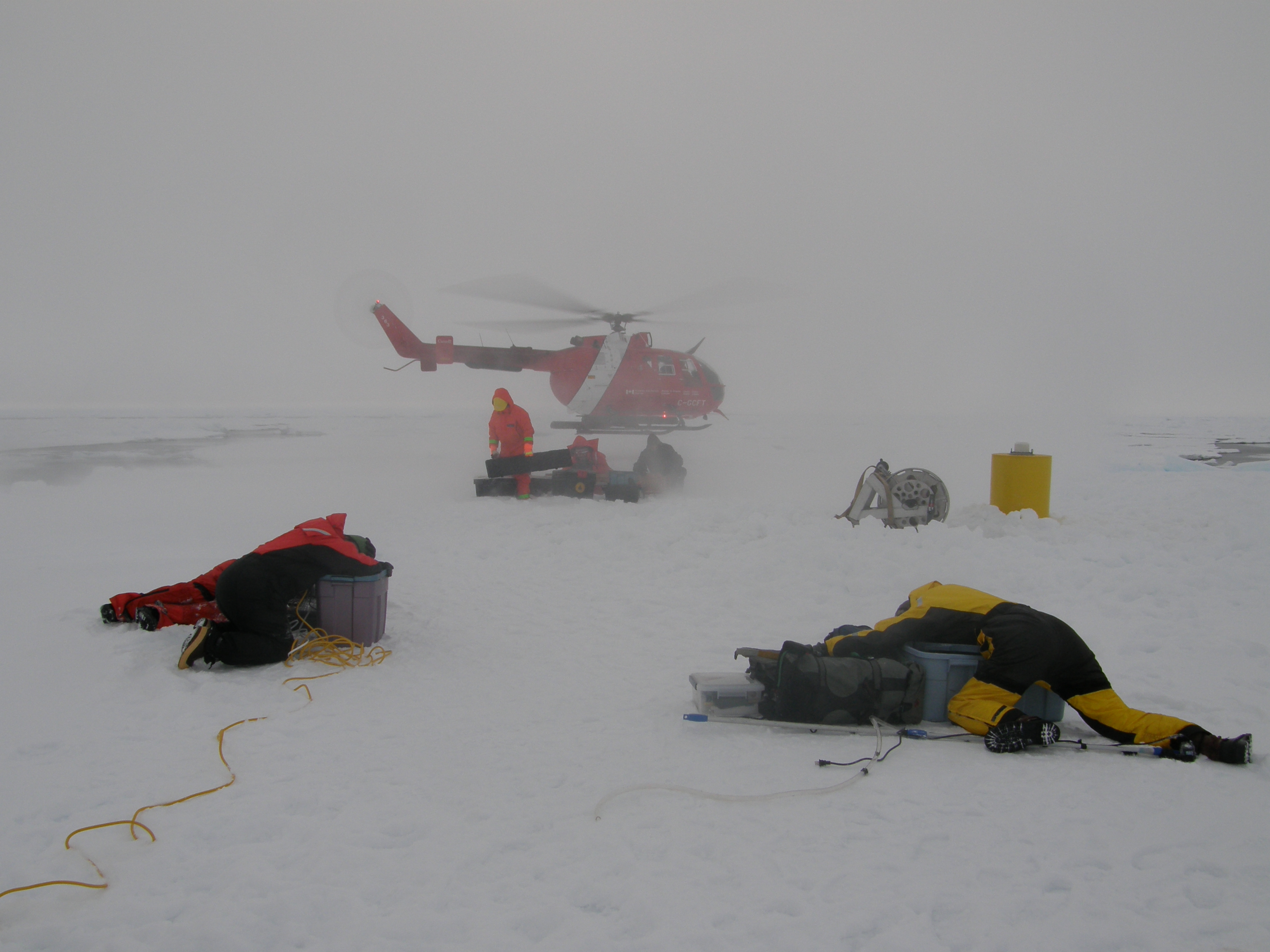ITP33 Deployment Operations
The second ice station to be occupied during the JOIS 2009 cruise was intended to be a platform for a Ice-Based Observatory deployment consisting of 3 buoys, but limited visibility due to fog prevented an extended helicopter reconnaissance, and the ice conditions in the area were rather thin and broken. However, in the afternoon, a small but thick floe was spotted than stood out compared to the surroundings, due to its higher freeboard above the waterline. The floe was found to be over 4 m thick, but only several tens of meters in diameter so consequently it was decided that only a single ITP would be deployed at this site. A standard 3 hour deployment operation of ITP 33 ensued while the fog gradually lifted, and the floe was concurrently sampled by several ice researchers.
More information and photos on the deployment operation are also available at: https://www.whoi.edu/page.do?pid=67297
